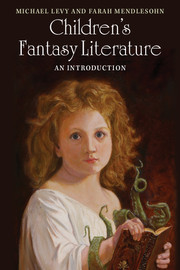Book contents
- Frontmatter
- Contents
- Acknowledgements
- Introduction
- 1 How fantasy became children's literature
- 2 Fairies, ghouls and goblins: the realms of Victorian and Edwardian fancy
- 3 The American search for an American childhood
- 4 British and Empire fantasy between the wars
- 5 The changing landscape of post-war fantasy
- 6 Folklore, fantasy and indigenous fantasy
- 7 Middle Earth, medievalism and mythopoeic fantasy
- 8 Harry Potter and children's fantasy since the 1990s
- 9 Romancing the teen
- Notes
- Further Reading
- Index
- References
8 - Harry Potter and children's fantasy since the 1990s
Published online by Cambridge University Press: 05 April 2016
- Frontmatter
- Contents
- Acknowledgements
- Introduction
- 1 How fantasy became children's literature
- 2 Fairies, ghouls and goblins: the realms of Victorian and Edwardian fancy
- 3 The American search for an American childhood
- 4 British and Empire fantasy between the wars
- 5 The changing landscape of post-war fantasy
- 6 Folklore, fantasy and indigenous fantasy
- 7 Middle Earth, medievalism and mythopoeic fantasy
- 8 Harry Potter and children's fantasy since the 1990s
- 9 Romancing the teen
- Notes
- Further Reading
- Index
- References
Summary
Throughout this book we have seen a slow, progressive extension of the age groups for which children's fantasy was being written. By the 1980s it was clear that there was a developing teen market; as we entered the 1990s the sense that there was a distinction between children's fantasy and fantasy for teens became stronger, with clear markers separating the teen market from the children's market, to the degree that it no longer made sense for publishers and authors to conflate the two age groups and their literature. We need to emphasize, however, that there has never been a time when teens and adults did not continue to read fantasy written for children. As it is not possible to say that the age of a protagonist is an absolute indicator of the target market, in essence the division that emerged was between fiction which recognizes puberty and adolescence, and that which does not. This chapter is concerned entirely with that which does not.
Social realism in fantasy
In the late 1980s and early 1990s children's fantasy appeared to be in decline, overtaken by the demand for social realism. This change in the market was one of the contributing factors in the growing division between children's and teen or Young Adult fiction. Although books for both groups could include material that was quite threatening (particularly to parents), the influence of social realism made it likely that books for older children would tend to be more grim or violent. Books for children, however, tended towards younger protagonists, lighter endings, cartoon violence and no sex. Books for teens headed in the opposite direction. It became increasingly untenable to market traditional fantasy to older teens. This division between children's and Young Adult fiction can be disputed but it is the one we will use here.
Some children's writers whose careers continued felt it was possible to write both social realism and the fantastic. In the introduction to her 1971 collection West of Widdershins, Barbara Sleigh wrote: ‘Why should we feel that it [magic] should always be in period dress? Surely, if we look for it, it can be found in the class-room, the public parks, in anyone's back garden, even in supermarkets.’ She had already demonstrated how this might be done in her own Carbonel (1955), which we discussed in Chapter 5.
- Type
- Chapter
- Information
- Children's Fantasy LiteratureAn Introduction, pp. 161 - 194Publisher: Cambridge University PressPrint publication year: 2016

